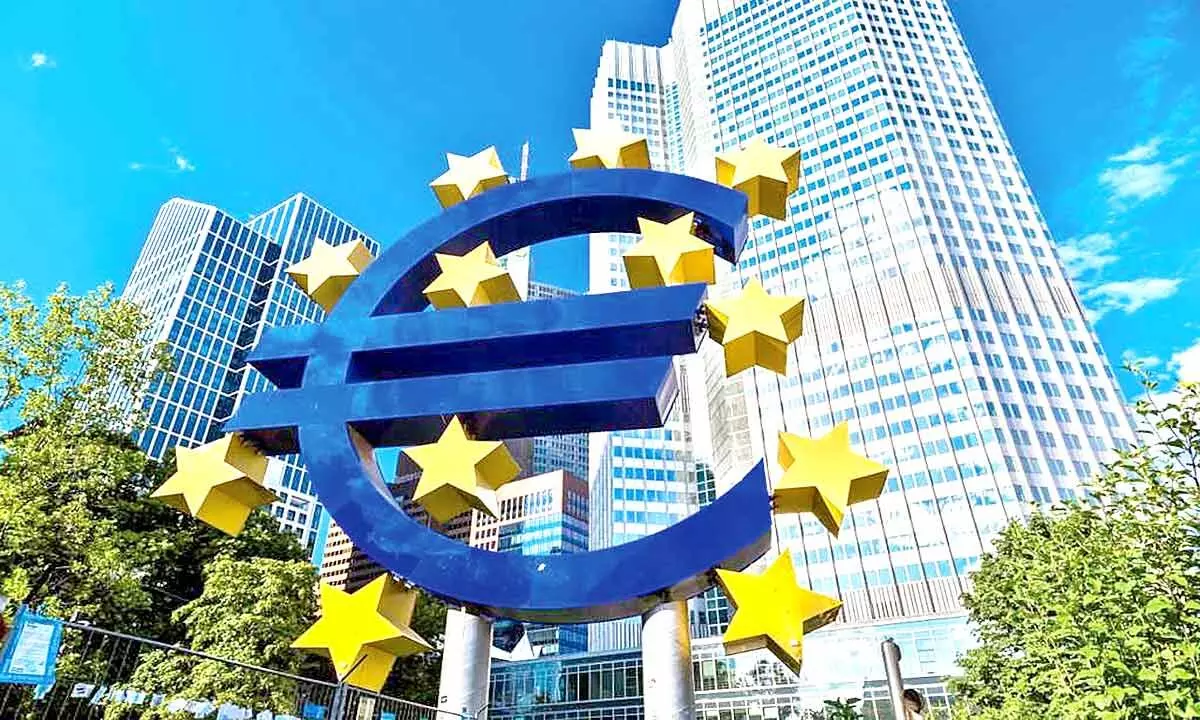Will ECB be late(st) to join the central banks' party?
European Central Bank's April meeting minutes and blog post in May by its President seem to suggest an inflection point in the assessment of its appropriate monetary policy response
image for illustrative purpose

Households' expectation of their financial situation over the next one year has fallen very sharply while the European Commission's business climate indicator continues to ease. Will impact of supply shocks and rate hikes constrain growth enough to demand a slower pace of further hikes and/or a lower terminal rate? Or will the ECB hike rates above neutral? The key will be whether slower growth manifests materially by then and reduce concerns of second-order passthrough of inflation
European Central Bank (ECB)'s April meeting minutes and the blog post in May by its President seem to suggest an inflection point in the assessment of its appropriate monetary policy response.
The April policy statement had earlier stressed on downside risks to growth from the war, muted wage increases, big difference between the economic (read demand) situation in the US and Euro Area, flexibility and gradualism in the conduct of monetary policy and its identified normalisation sequence of ending net asset purchases in Q3 followed by commencing rate hikes. It had nevertheless acknowledged near term upside risks to inflation and initial signs of inflation expectations edging above target.
The minutes of this meeting, released later in May, revealed more hawkish discussions on the policy path. This included the inconsistency of a highly accommodative monetary policy stance with high inflation and rising inflation expectations, criteria for rate hikes being already met, the need for asset purchases to end soon in Q3 and for rates to move soon to neutral. Broader price pressures in March, inflation expectations moving higher, hit to growth from the war being insufficient to meaningfully reduce medium-term inflation and other factors aiding inflation persistence (China's pandemic response, likely future wage pressures which need to be preempted, etc.) drove this. The overall policy balance seemed to have tilted towards a more hawkish path.
If there was any ambiguity regarding this, four days later, a rare blog post by the President of the ECB cleared this. It detailed the combination of price shocks, including stimulus-driven demand, causing inflation to be broad and persistent and why pre-pandemic structural disinflationary pressures are unlikely to return as geopolitics drive supply chains and companies transition to green energy. Above target inflation expectations could thus prove sticky. For growth, accumulated savings and the labour market recovery are tailwinds but consumer confidence has dipped.
Overall, ending net asset purchases very early in Q3 (likely June), commencing rate hikes in July and exiting negative rates by end of Q3 was deemed fit. Gradualism (pace), but now only if appropriate, optionality (continuous assessment) and flexibility (reinvestment of maturing assets) continued to be part of the narrative.
To meet the extant official forecast of 5.1 per cent y/y inflation in 2022, average inflation for the rest of the year has to be 3.4 per cent, very low now given recent price pressures and outlook. Updated forecast this month will most likely be increased.
The ECB now seems very likely to join global central banks' rate hike party. Rates could be hiked by 25 bps each in July and September if it decides to exit negative rates by the end of Q3, but what will be the story beyond this? Consumer confidence indicators have already fallen very sharply since March. Households' expectation of their financial situation over the next one year has fallen very sharply while the European Commission's business climate indicator continues to ease. Will impact of supply shocks and rate hikes constrain growth enough to demand a slower pace of further hikes and/or a lower terminal rate? Or will the ECB hike rates above neutral? The key will be whether slower growth manifests materially by then and reduce concerns of second-order passthrough of inflation.
(Sreejith Balasubramanian is economist, Fund Management, IDFC AMC)

